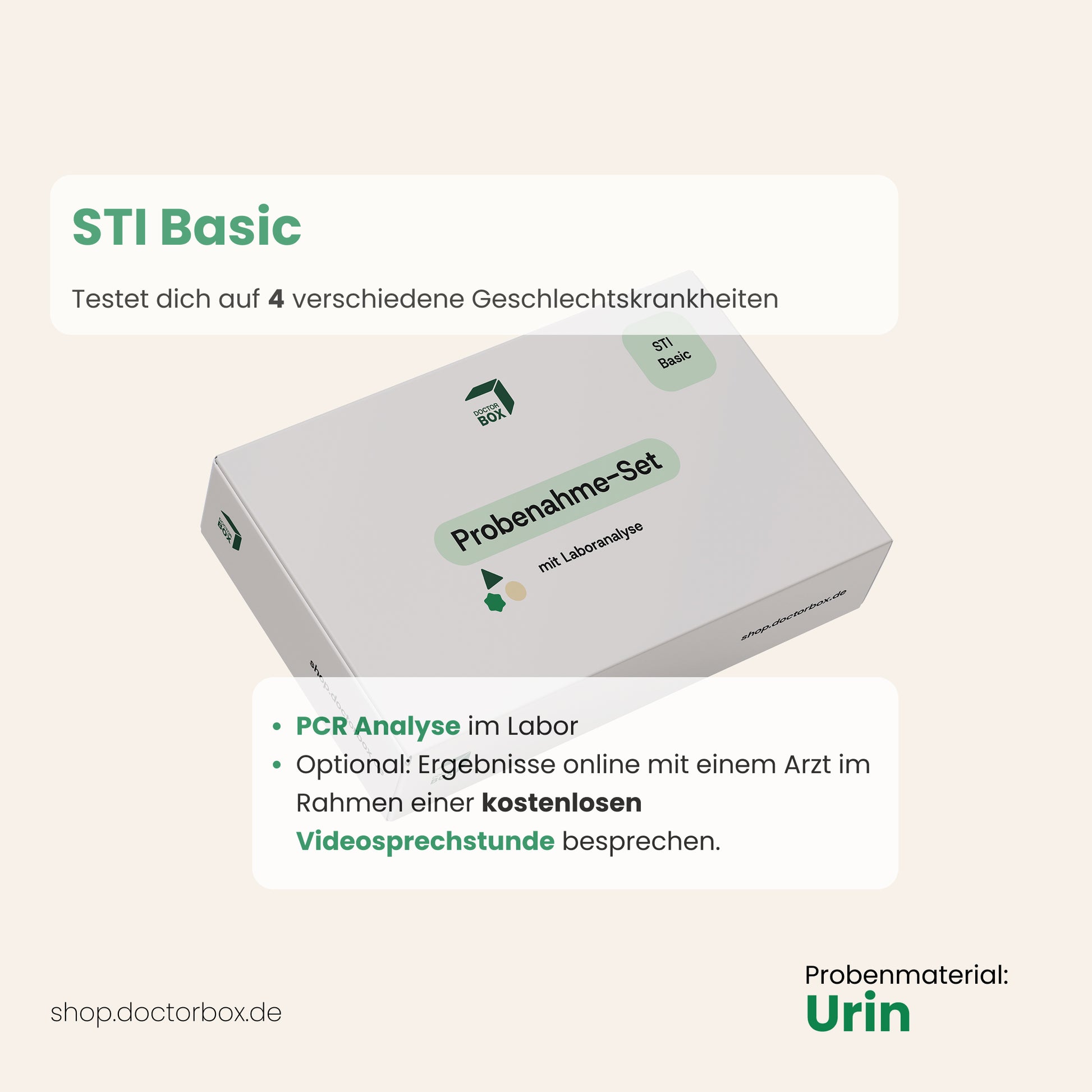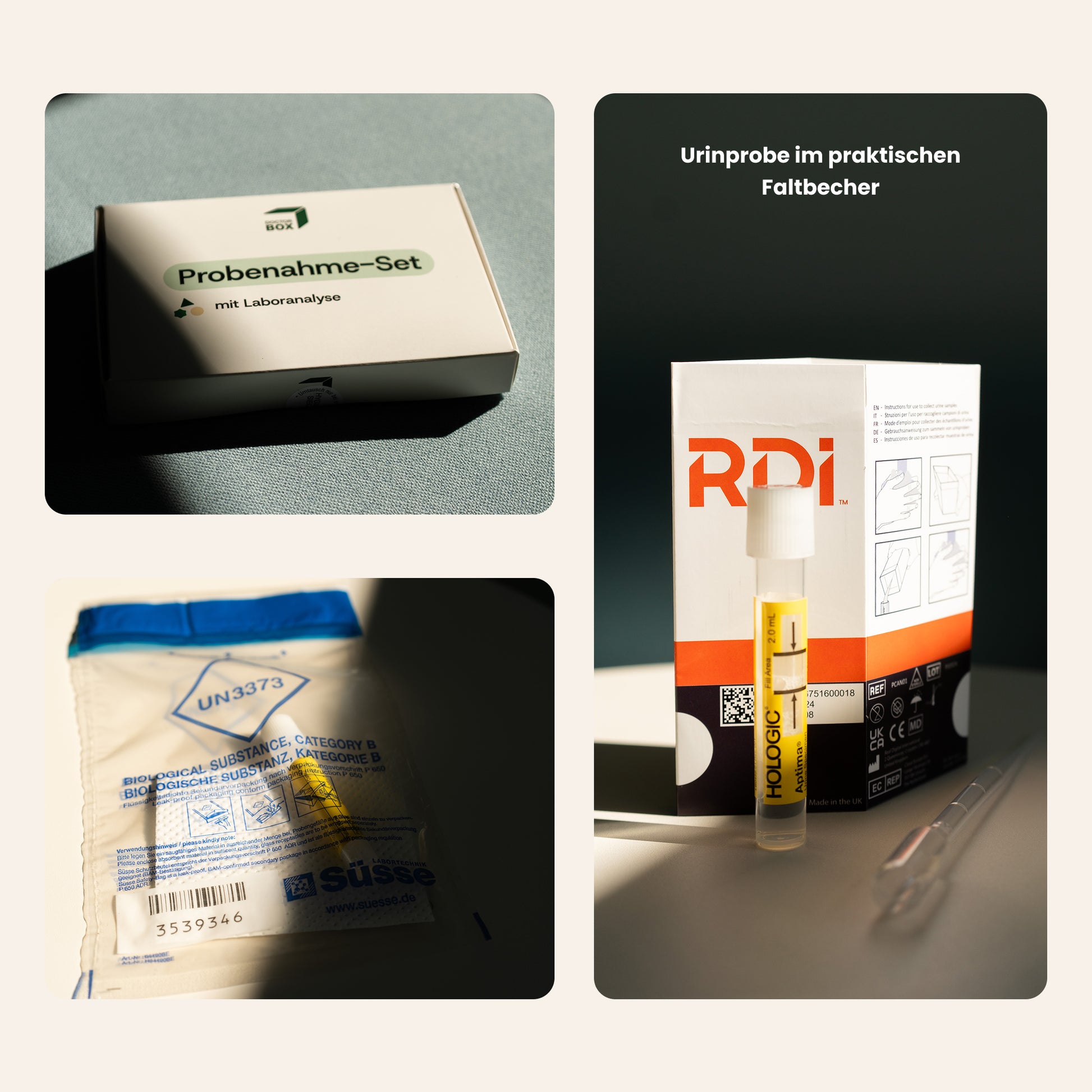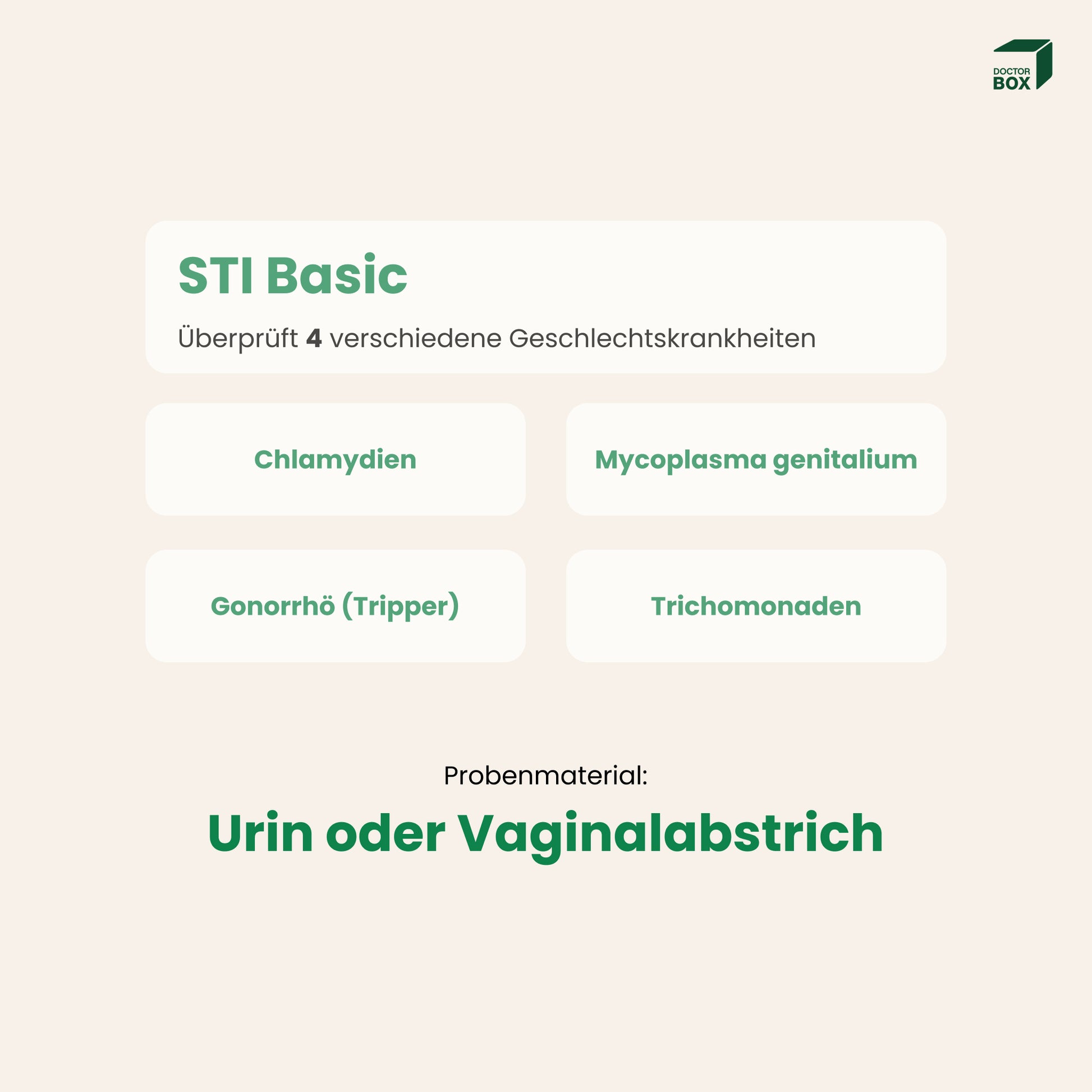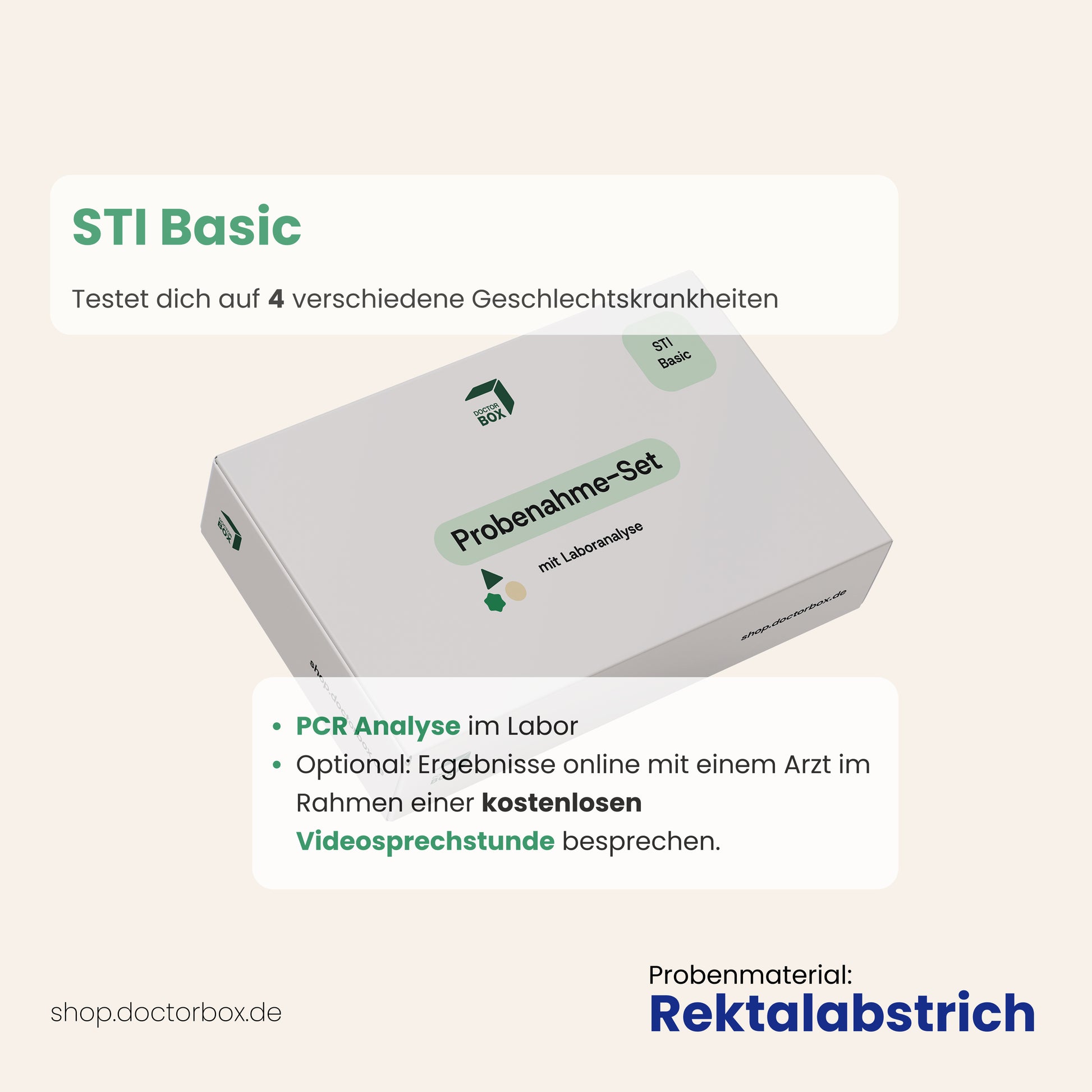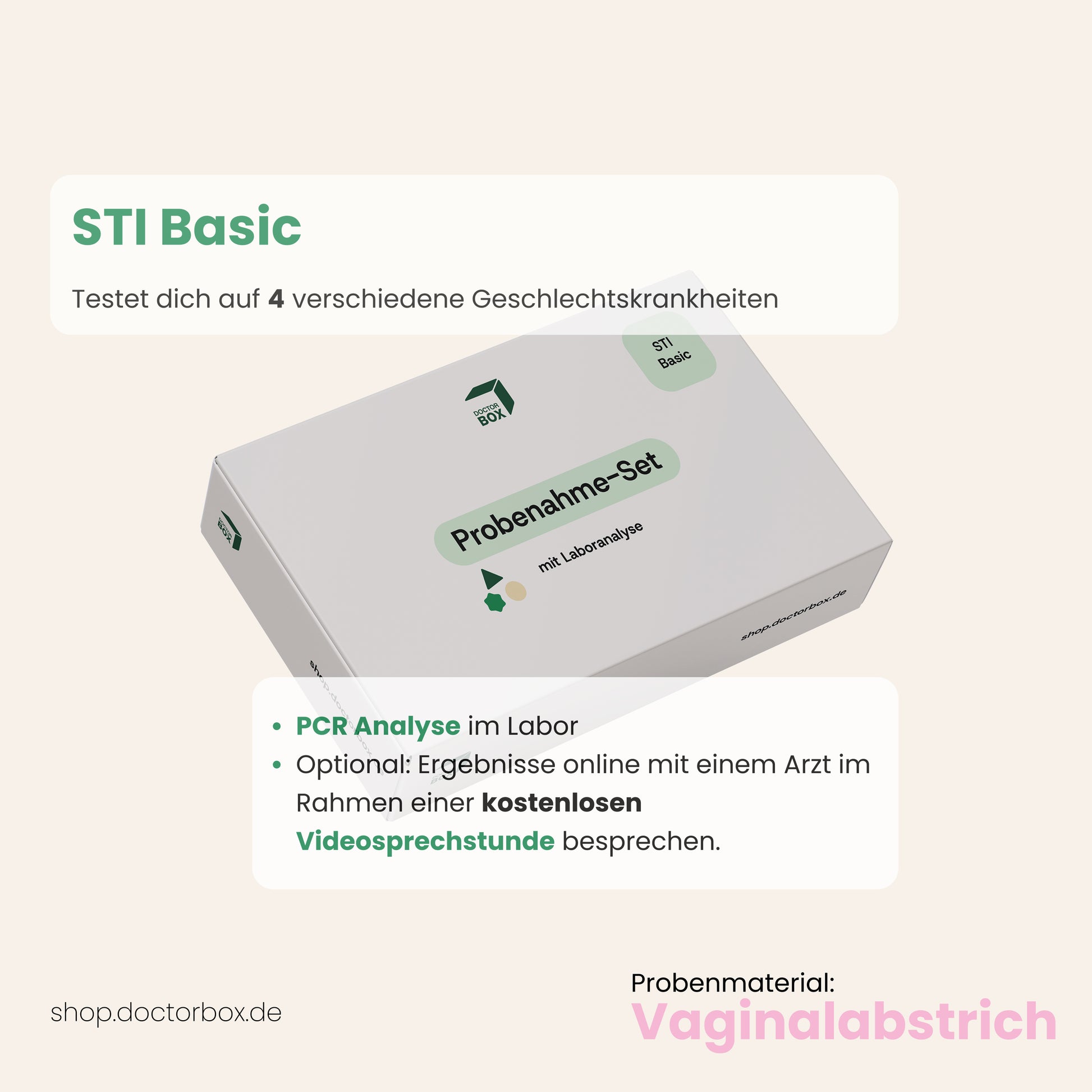STI Basic home test – sexually transmitted infection test
STI Basic home test – sexually transmitted infection test
Couldn't load pickup availability
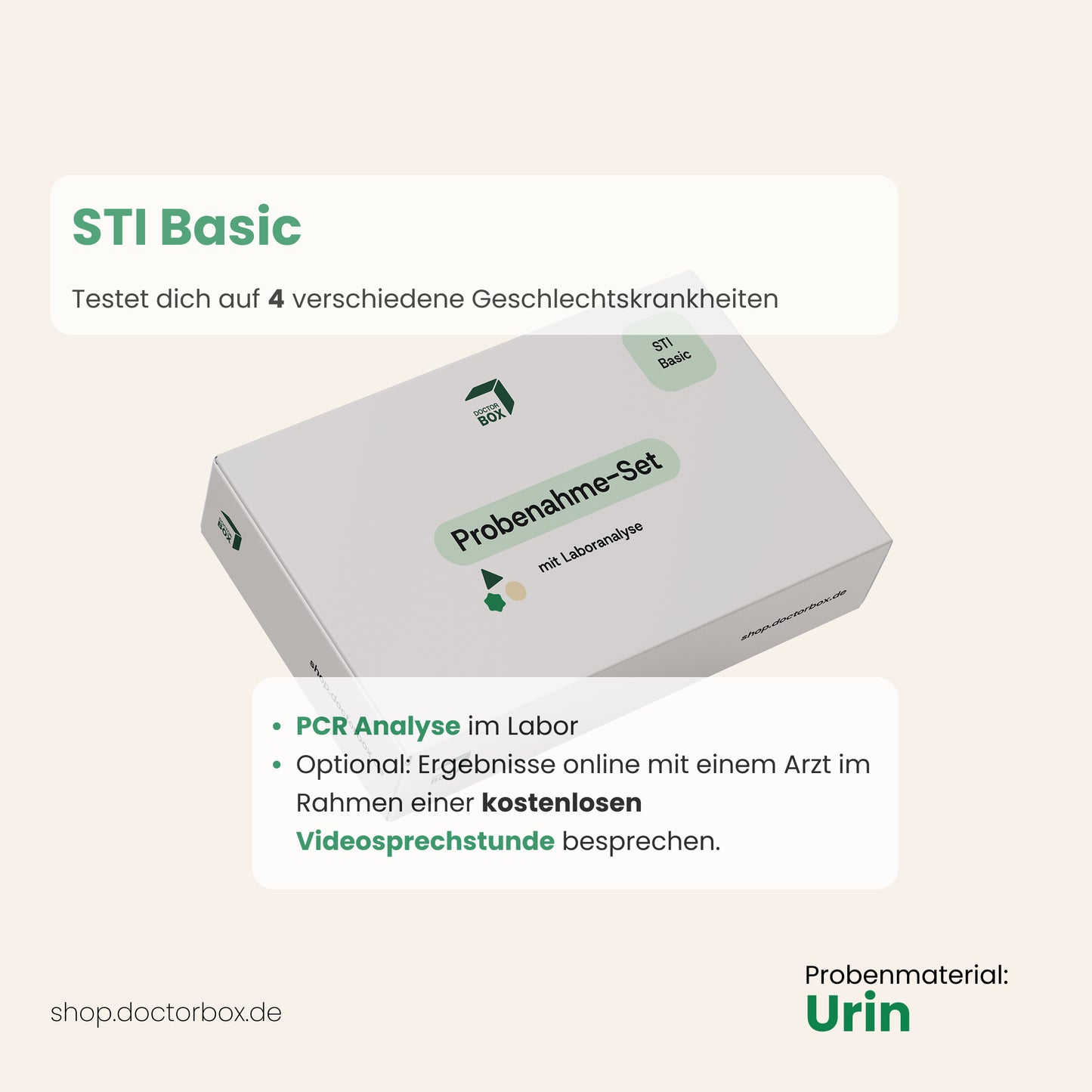
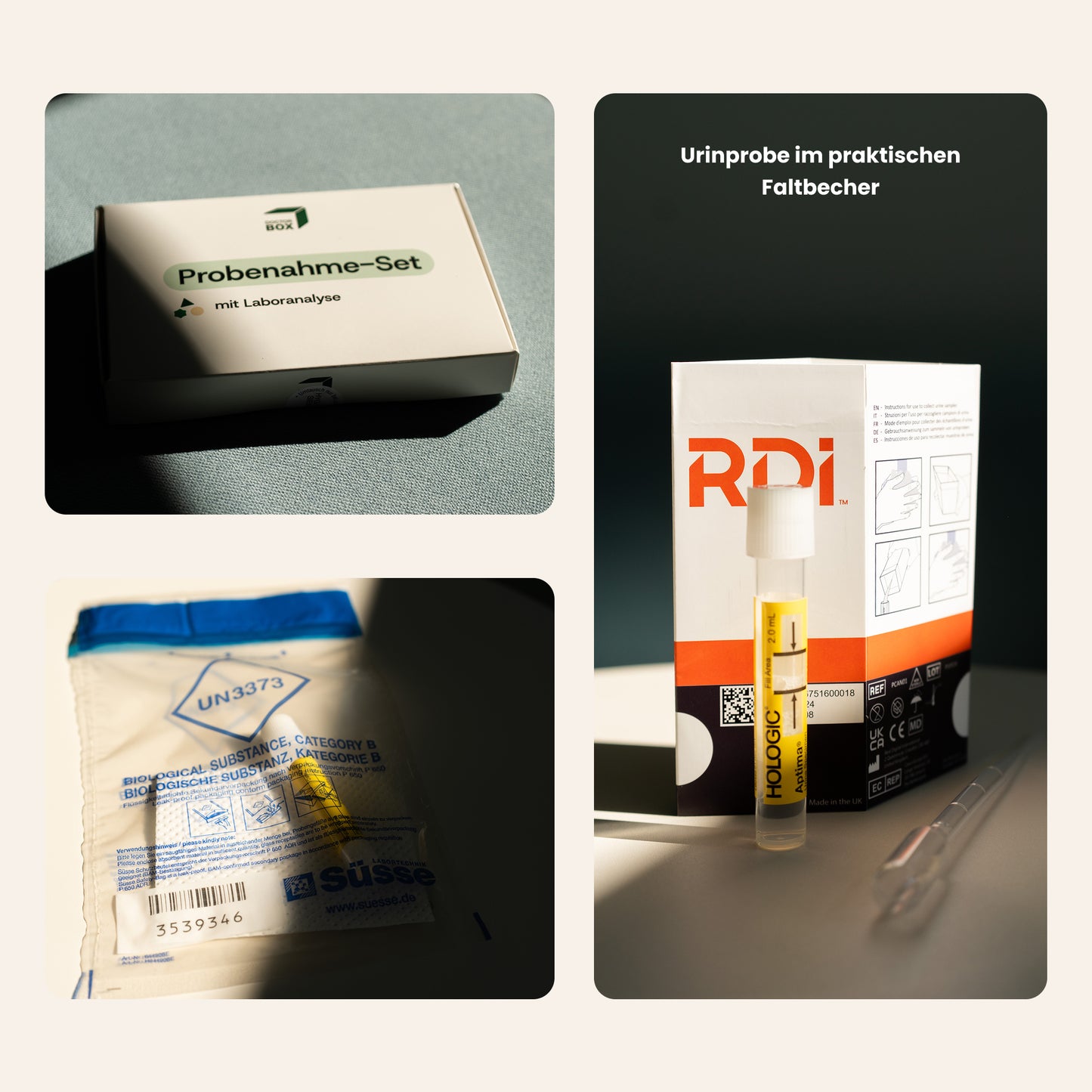
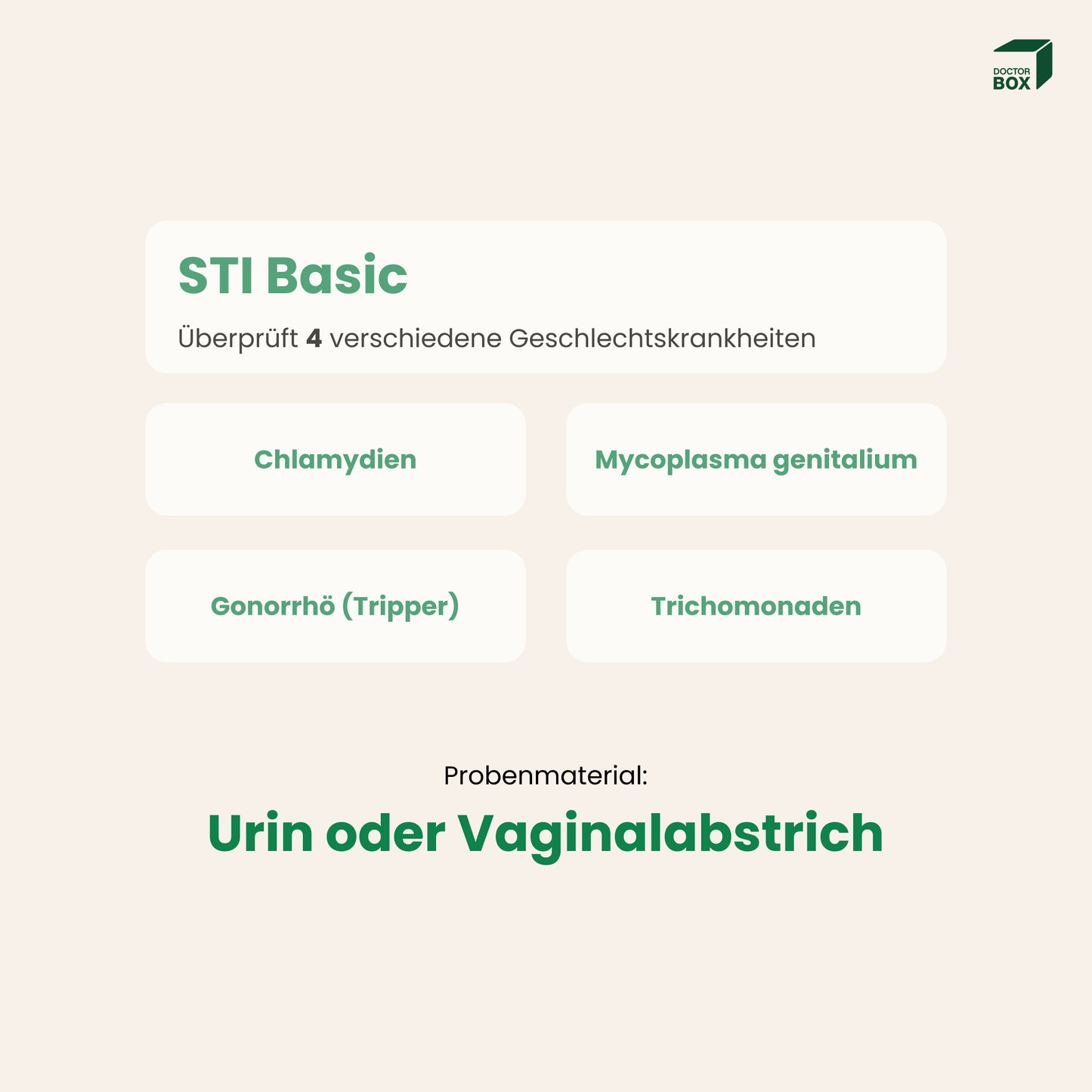

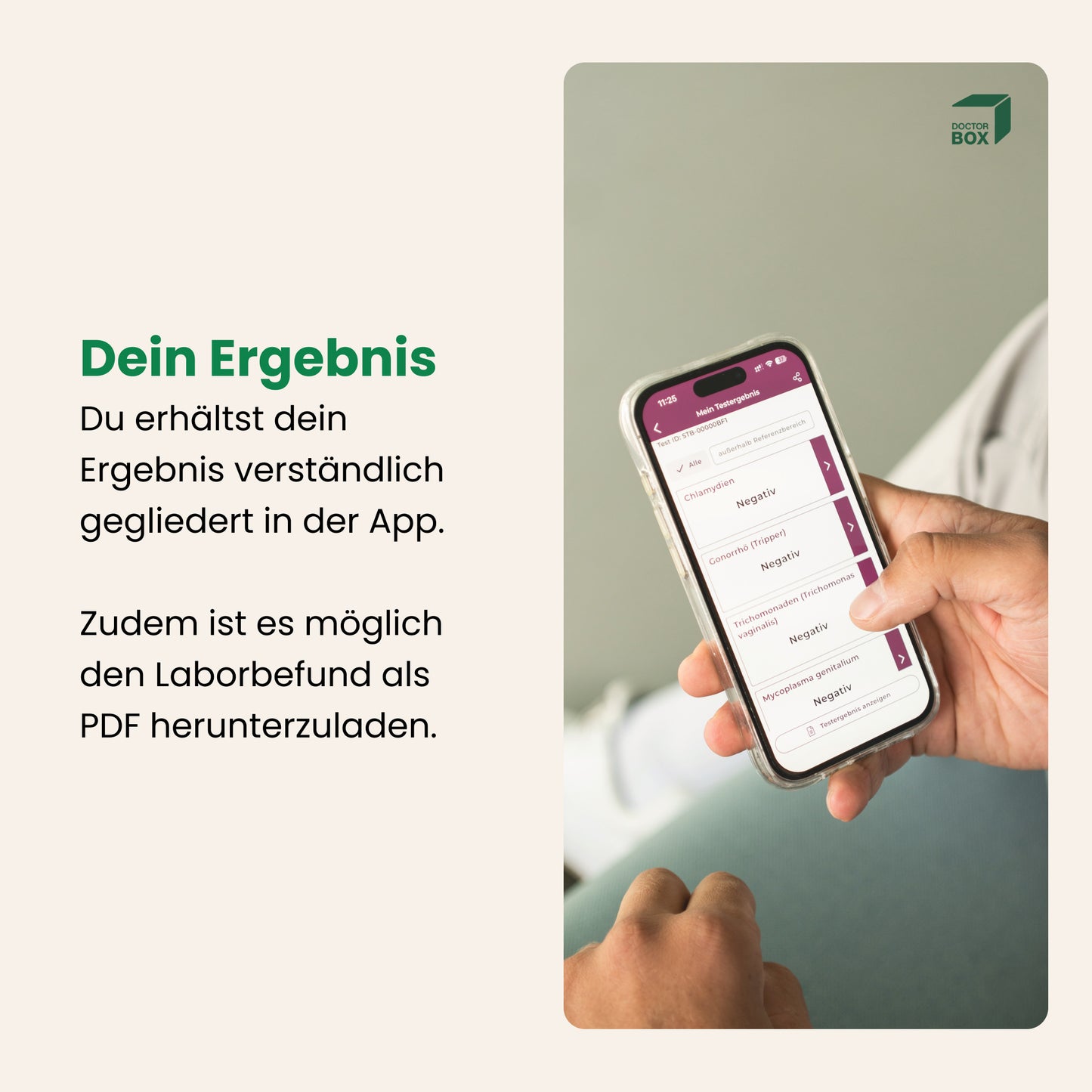

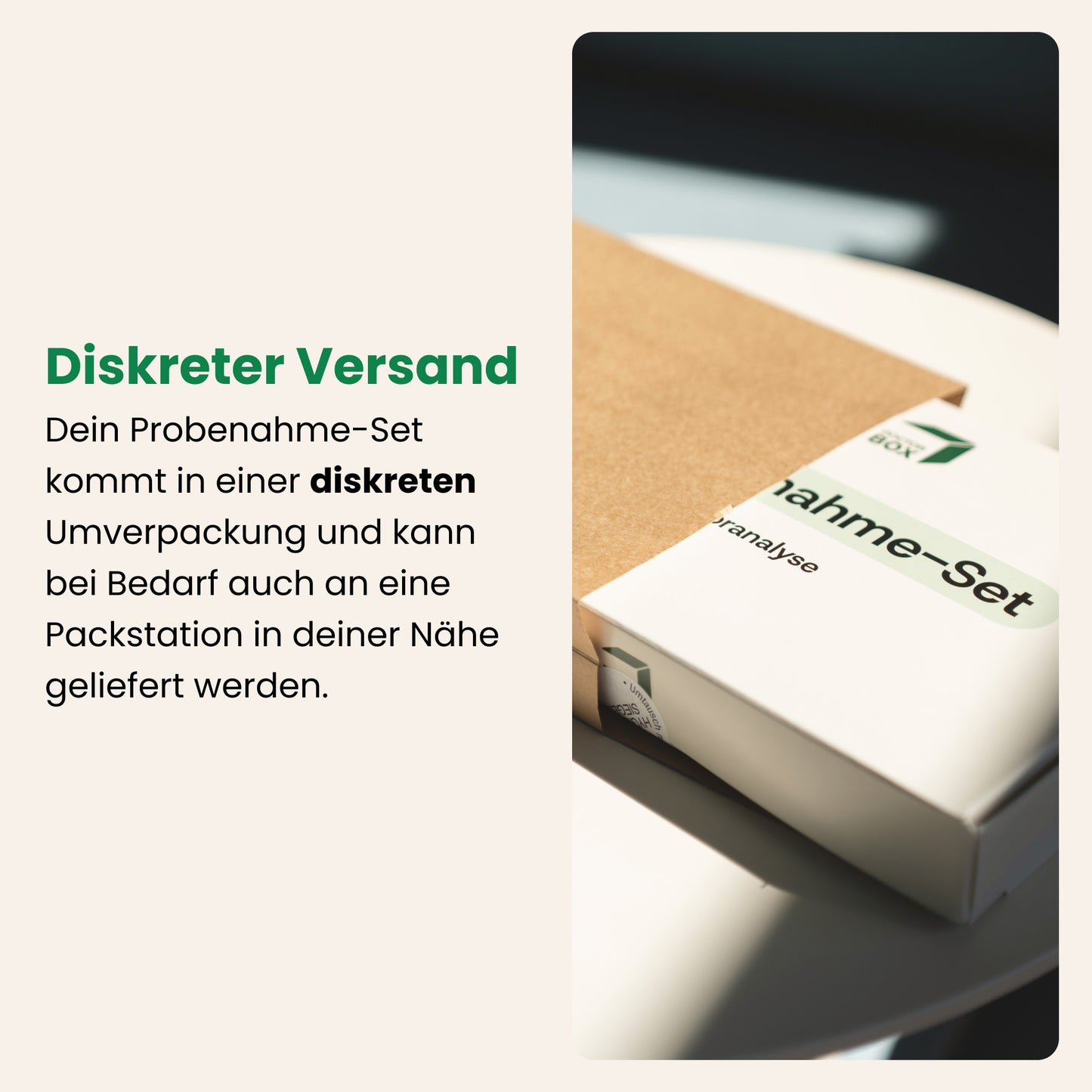
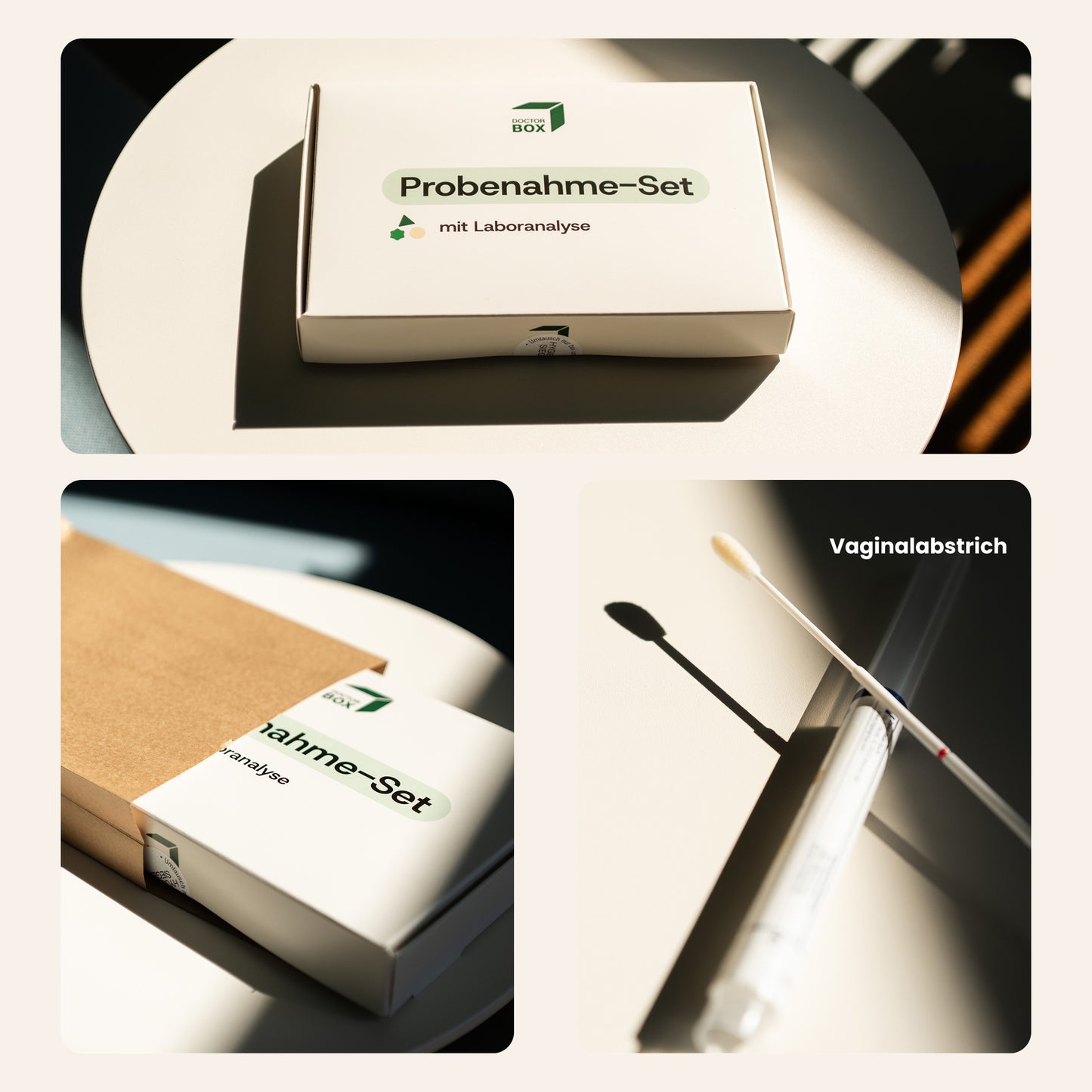
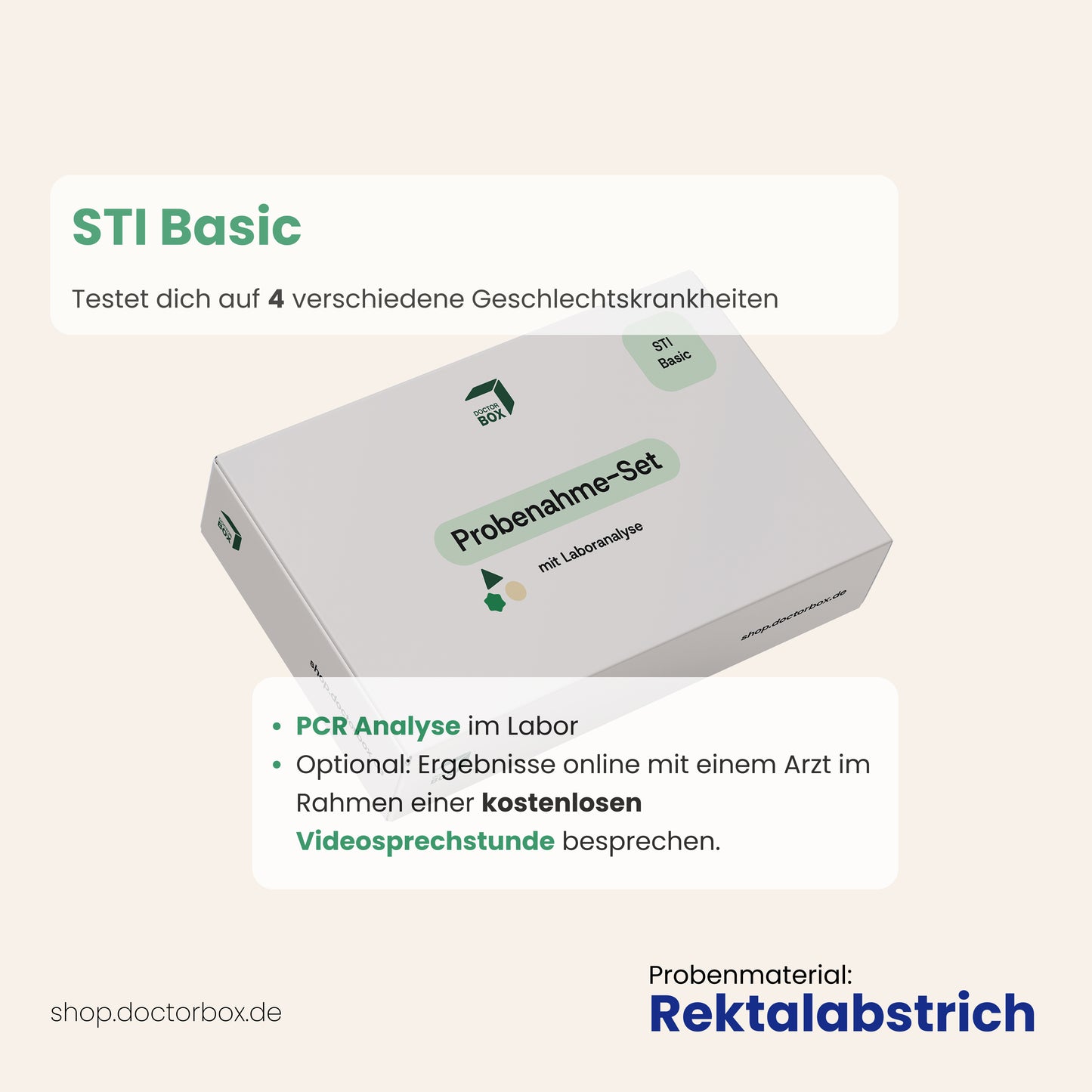
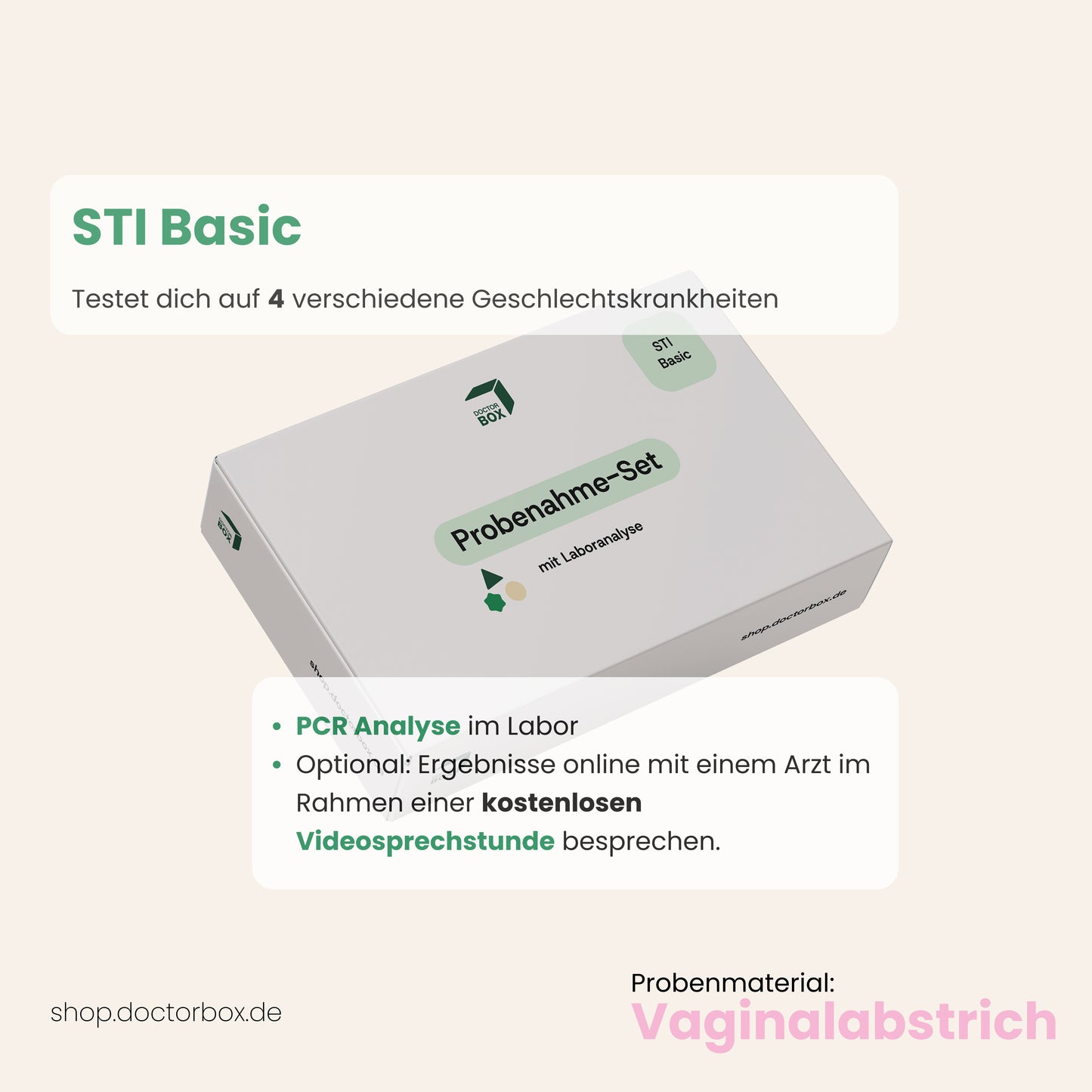
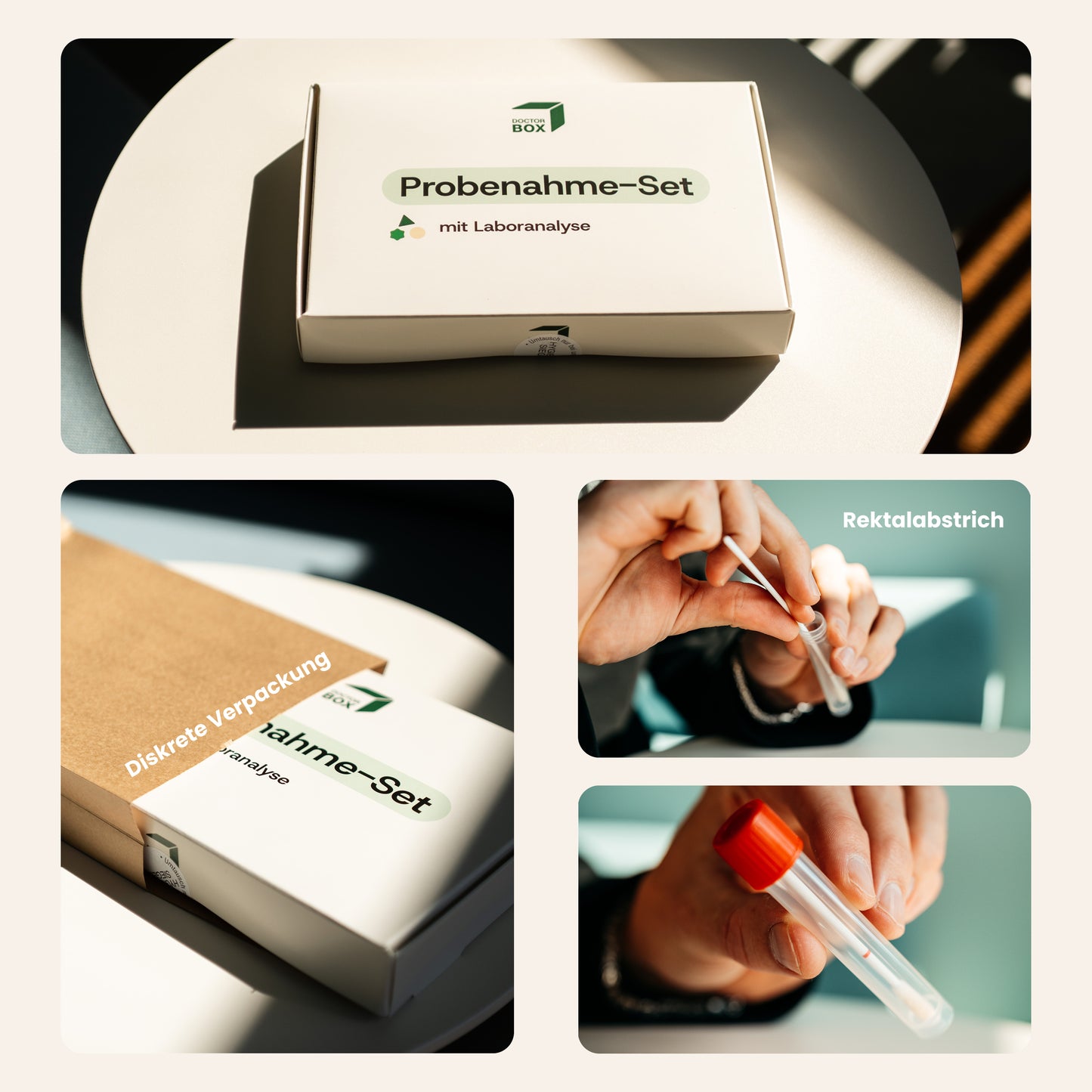
STI Basic at-home test – Stay safe from home
Discreet, convenient, and reliable—test yourself for four common STIs without leaving your home.
The STI Basic Home Test lets you specifically screen for chlamydia and gonorrhea—two of the world’s most common sexually transmitted infections (STIs). The test also checks for trichomoniasis and mycoplasma genitalium.
You decide which type of sample suits you best: – Urine sample (suitable for men and women) – Vaginal swab (suitable for women) – Rectal swab (suitable for all genders, especially for anal contact)
You can easily collect the sample at home, send it to the lab free of charge, and receive your results digitally via the DoctorBox app – safe, easy to understand, and end-to-end encrypted.
Tested pathogens
- ✓ Chlamydia
- ✓ Gonorrhea
- ✓ Trichomonas
- ✓ Mycoplasma genitalium
Your advantages at a glance
- Test conveniently from home—no waiting times or doctor’s visits required
- Choose between urine, vaginal, or rectal swab.
- Laboratory analysis by professionals – same quality as in a doctor’s office
- End-to-end encrypted results delivery
- Easy sample collection with clear instructions
- Results available digitally via the DoctorBox app
- ISO 27001 certified data security & servers located in Germany
⚠️ Note on screening tests: The STI Basic Home Test is a screening test. A “reactive” result is an indication of a possible infection. Medical confirmation is required. Please consult a licensed physician for further clarification.
Photos of Mirko Meister
The symptoms listed below can also be attributed to other health problems. Therefore, it is advisable to carry out STI tests regularly. In the table you will find typical symptoms of the four STIs that our STI Basic covers:
1. Chlamydia (Chlamydia trachomatis)
Types D-K are responsible for chlamydia infections of the urinary and genital tract. This manifests itself, for example, as inflammation of the cervix (cervicitis) or inflammation of the ureter (urethritis) with burning when urinating or discharge.
Symptoms in men include pain when urinating and abnormal discharge from their penis. If the infection is left untreated, the bacteria can spread and cause inflammation of the prostate or female internal sex organs, which can result in infertility. It can also cause inflammation of the conjunctiva, known as swimming pool conjunctivitis, as it can be transmitted through water.
In women, the infection usually occurs without symptoms, meaning that it can easily be transmitted to the man, who then develops symptoms. Infection is particularly dangerous during pregnancy, as the unborn child can be harmed. Type L1-L3 infections lead to the sexually transmitted lymphogranuloma inguinale, which manifests itself in swollen lymph nodes in the groin. This form of chlamydia occurs primarily in tropical and subtropical regions.
2. Gonorrhea (clap)
In the acute phase, 2-7 days after infection, men experience inflammation of the urethra (urethritis) with itching, purulent discharge, painful urination and frequent urination. Some men may not notice any symptoms for up to a month.
If the infection is not treated, inflammation of the prostate can occur in the chronic phase.
Women can be infected without experiencing any symptoms and the disease can remain undetected and untreated for a long time. Otherwise, a variety of local inflammatory reactions in the area of the bladder or the female reproductive organs such as the ovaries are possible, with the risk of infertility. An infection is particularly dangerous during pregnancy, as the unborn child can be harmed.
3. Trichomonads (Trichomonas vaginalis)
Most people infected with Trichomonas vaginalis have no symptoms and the infection can go undetected for years.
Trichomoniasis affects both women and men. Symptoms are more common in women. Symptoms may appear 5 to 28 days after infection. Symptoms include pain, burning or itching in the penis, urethra (urethritis) or vagina (vaginitis). A foul-smelling, thin vaginal discharge is also possible. Symptoms for both sexes may increase during intercourse and urination.
4. Mycoplasma genitalium
The infection causes inflammation of the urethra (urethritis) in both men and women, which is accompanied by mucous-purulent discharge from the urinary tract and painful urination.
In women, it can also cause inflammation of the cervix (cervicitis) and the internal genital organs, which can lead to infertility in the long term.
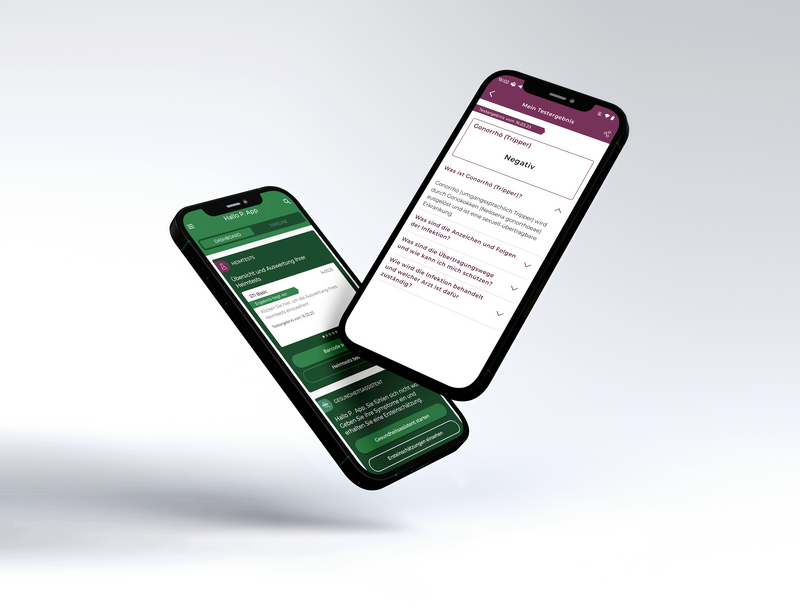
There are several arguments in favor of carrying out the STI Basic:
- Discretion: The STI Basic gives you the opportunity to check your sexual health in a private setting. In addition, the home test does not require the answering of unpleasant and sensitive questions.
- Convenience: The STI Basic can be ordered online and delivered directly and discreetly to your home. You can take the sample from the comfort of your own home without having to make an appointment.
- Early detection: Most STIs can cause serious health problems if left untreated. The STI-Basic can help to identify STIs early, before serious complications arise.
- Protection of the partner/sexual environment: If you suspect that you have been infected with an STI, the STI Basic can provide clarity. Within a few days you will receive your test result and you will have clarity. Protect yourself and your partner. Regular and early screening can help reduce the spread of STIs in the general population.
Important: If the test result is positive, please consult a doctor for further clarification and diagnostics.
The STI Basic checks four common STIs based on a urine sample:
- chlamydia
- gonorrhea
- trichomonands
- Mycoplasma gentalium
The STI Basic sampling set is a simple and convenient urine test for at home. We have integrated a user-friendly urine collection kit that allows easy urine collection regardless of gender.
Then send the sample tube to our specialist laboratory in the enclosed protective and shipping bag. The laboratory will check your urine sample for chlamydia, gonorrhea (clap), trichomonads and Mycoplasma genitalium using PCR. After three to seven days you will receive your result in your DoctorBox app.
Note: Pay attention to the timing when taking the sample. If you have been infected with an STI, it usually takes up to 3 weeks for the pathogens to be detectable in the urine. This period of time is called the incubation period. In the case of STIs, the incubation periods can be up to 3 weeks or more. If you suspect that you have been infected during sexual intercourse, you should wait at least three weeks before carrying out the STI basics.
The STI Basic is aimed exclusively at adults (aged 18 and over) and is useful:
- If you want to learn about your sexual health and act proactively
- If you are in a new relationship and want to play it safe with your partner
- If you have frequently changing sexual partners (regular testing recommended)
- If you suspect that you have been infected or have typical symptoms such as itching, burning or discharge in the genital area
In the DoctorBox you will receive a list of the following four pathogens with positive or negative evidence:
- chlamydia
- gonorrhea
- trichomonads
- Mycoplasma genitalia
In addition, for each STI you will receive further information on the infection, the therapy options and prevention options and how to deal with a positive result.
The DoctorBox home tests may not be used:
- If you are not yet of legal age/adult (from 18 years of age)
The STI-Basic is not suitable for examining severe acute diseases. If you have severe symptoms, suffer from extreme pain or high fever, please contact your doctor.
If your test result is positive, you have the option of booking a video consultation via DoctorBox to get a suitable antibiotic prescribed online. This saves you the trip to the doctor.
The booking tool for the video consultation appears directly below your positive test result in the app. You will find a detailed description of the process in the widget.
The instructions for use of the STI Basic home test can be found here .
Sample collection process
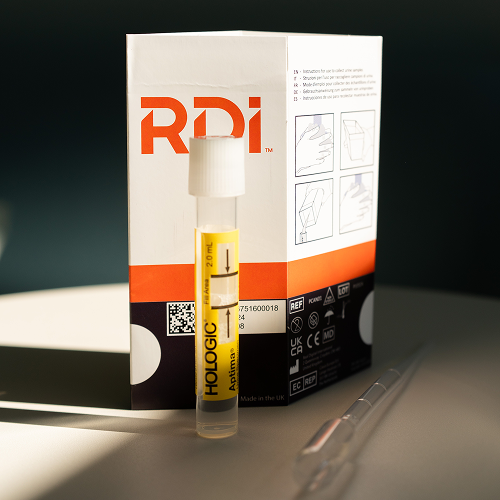
1. Collect sample at home
Read the enclosed instructions carefully before starting. Collecting the blood sample is straightforward and only takes a few steps.

2. Scan barcode
Simply scan the included barcode in the DoctorBox app – this ensures your sample is uniquely assigned to you.
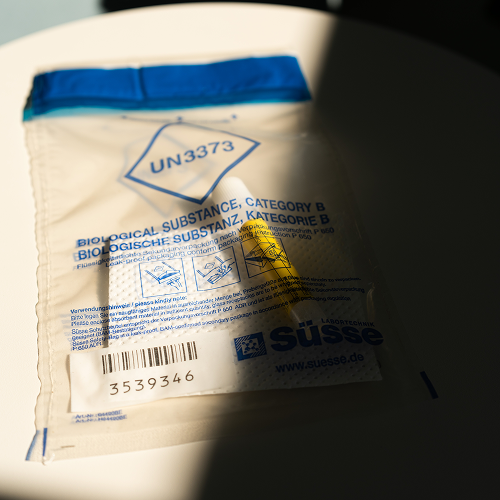
3. Send samples
Package the blood sample as described in the instructions and, if possible, drop the prepaid envelope in the mail on the same day.
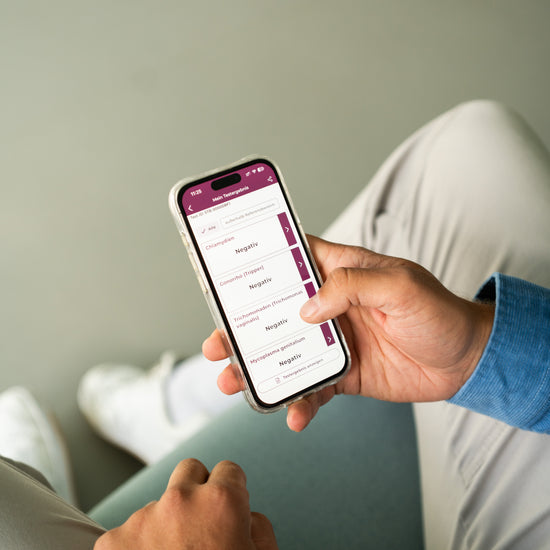
4. Your results in the app
After the lab analysis, you’ll get your result directly in the DoctorBox app – clear, easy to understand, and accessible anytime.


